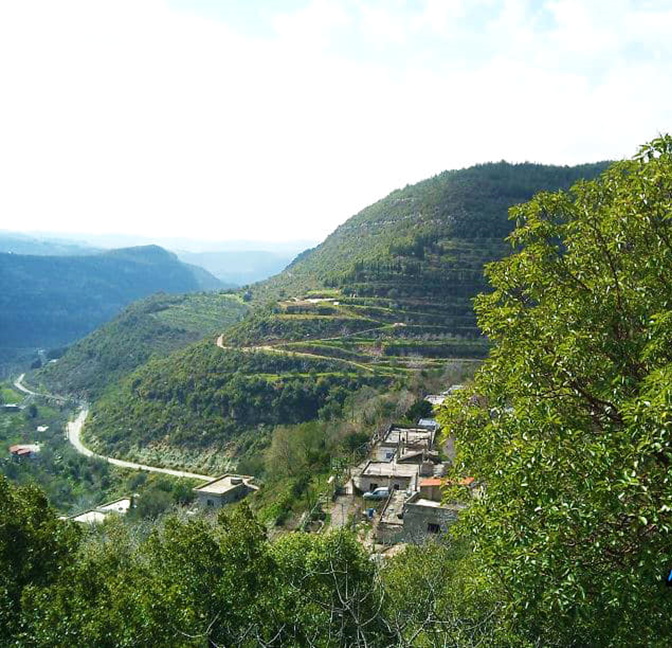Kaf Al-Hamam is one of the villages that is both charming and picturesque .It has
beauty, trees, and greenery, in addition to its fresh spring, which was intended for visitors and tourists to hike, as well as its warm weather even in winter. This region has great historical significance and implications that indicate this site’s significance. Archaeological searches recorded in the area have led to the discovery of art models of Islamic architecture masterpieces.
The name of the village consists of two words: “Kaf” means “cave” in Syriac, meaning “rock,” and “Hamam” in Syriac means “hot,” or the place where the pigeon bathes. Thus, with the combination of the two words, the meaning of the name of the village becomes “the hot cave” or “the cave in which the pigeons live.”
The village is home to many unique archaeological discoveries through different eras. One of the first discoveries that took place next to the spring was a “bathroom” dating back to the Islamic era, and the second discovery was of a “mosque” going back to the same period, while the third discovery was from a different period, the Roman period on the eastern side of the mosque in a residential area.
A pottery channel was found inside the bathroom wall, about 140 centimeters high, in addition to a water channel made of cylindrical pottery pieces, some of which were vandalized. This canal continues towards the south with an indefinite length, but is more than ten meters long, and branches out into the underground, another channel as a waterway. To the left of the door from the eastern side, there is a wall built and covered by a layer of lime, heading towards the south.
Concerning the archaeological mosque, it dates back to the period of Islamic Da ‘wa, the 11th and 12th centuries AD, next to the shrine of the “Prophet Zahir” in the village of Kaf al-Hamam, it has a stone floor. Through the follow-up archaeological excavation, two bases were discovered, each holding a double arch adjacent to the wall. The outer threshold of the door was found that was artistically sculpted.
From the inside, a three-piece stone step leading to the mosque’s floor was uncovered .
The village of “Kaf Al-Hamam”, affiliated to the “Brumanet Al-Mashaikh” , in the “Sheikh Badr” area, about 580 meters above sea level.
Amal Farhat

